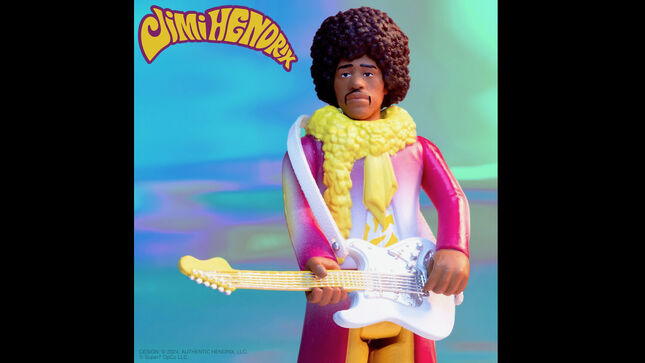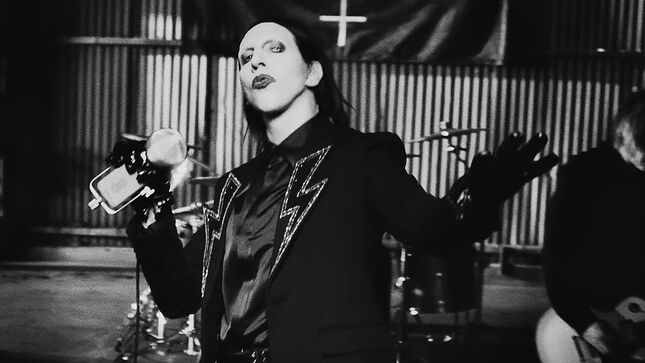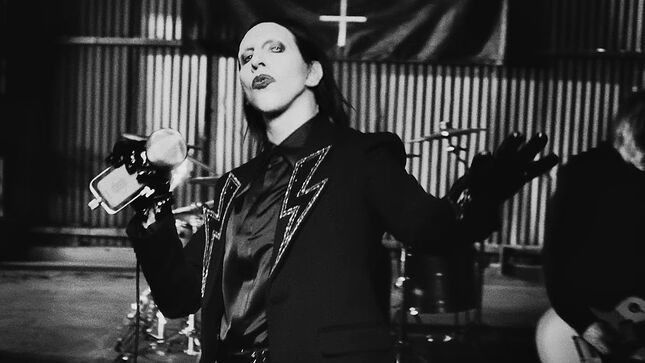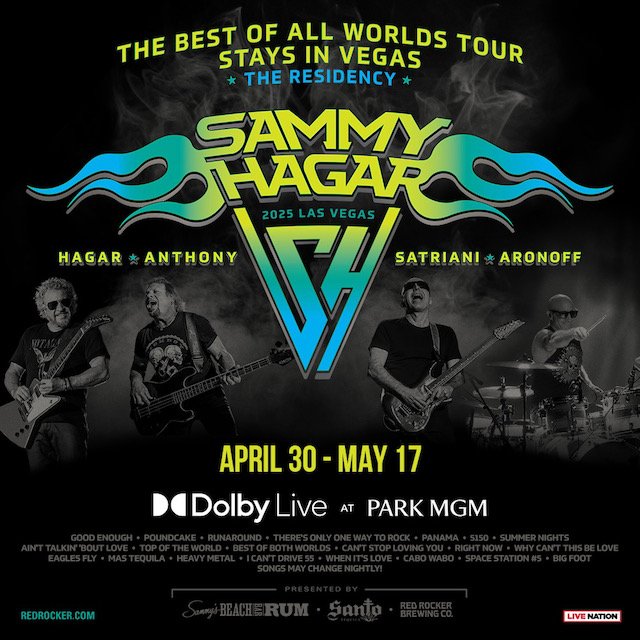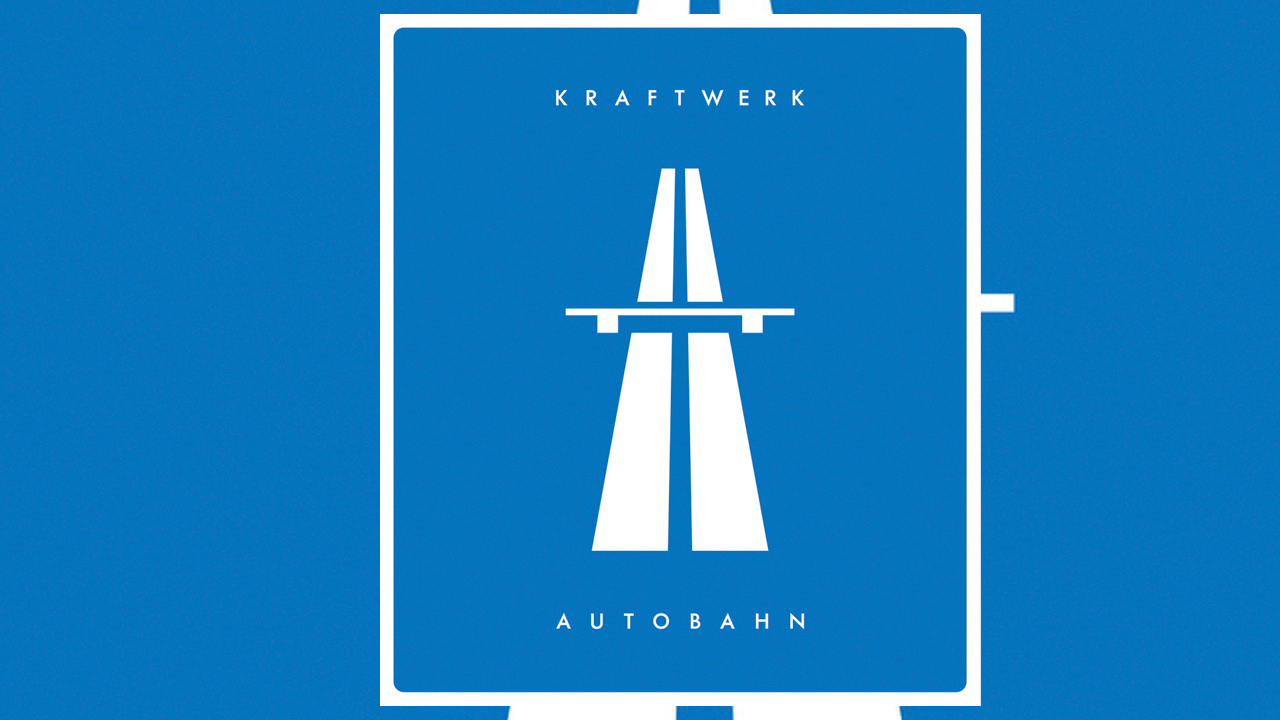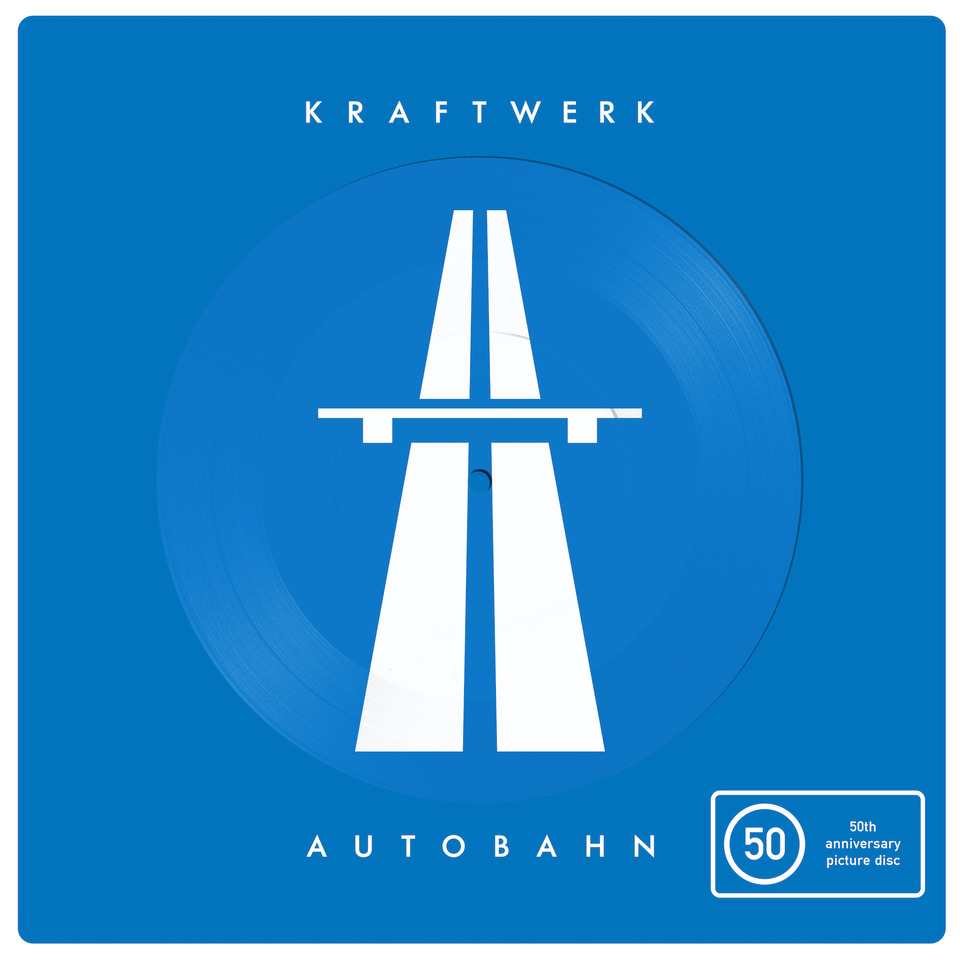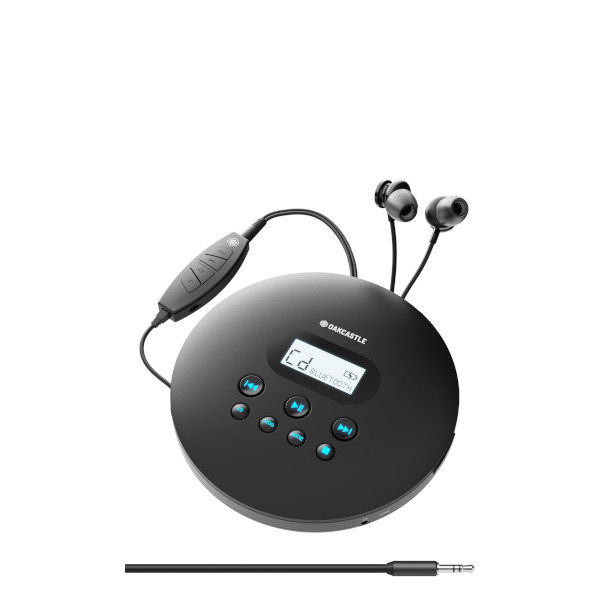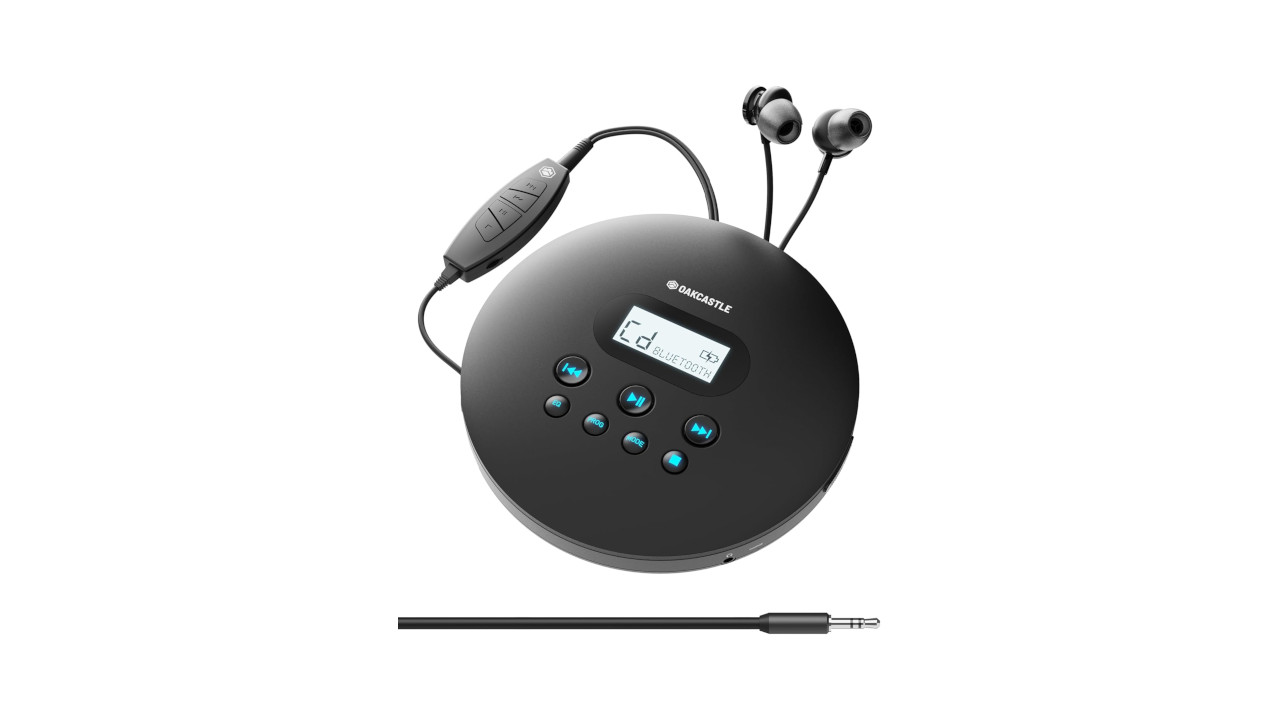
Feature Photo: Sterling Munksgard-Shutterstock.com
Victory has many faces, and so does this list. It begins with anthems so instantly recognizable they’ve become synonymous with triumph itself, before plunging into songs that reveal the deeper truths of success—those won not just on podiums but in life’s quieter, more personal battles. We crafted this article to reflect the complexities of winning, pulling from a broad spectrum of emotions and experiences to give readers a mix of the familiar and the unexpected. It’s a journey that crescendos into a surprising but fitting finale: a celebration of finding fulfillment not in trophies, but in purpose and passion.
We’ve left off some obvious choices—Queen’s “We Are the Champions,” Survivor’s “Eye of the Tiger,” and Rocky’s “Gonna Fly Now,” to name a few. These songs are iconic, no doubt. But their omnipresence in conversations about winning made them too easy a choice. Instead, we’ve chosen tracks that encourage readers to think a little harder, to dig a little deeper into what winning truly means. This list offers songs that inspire, uplift, and redefine victory, blending well-known hits with profound hidden gems to create an experience as varied and entertaining as the journey of success itself.
Elton John’s “I’m Still Standing” opens the list as a defiant testament to resilience, while Joe Walsh’s “Life’s Been Good” turns success on its head, reflecting on fame’s absurdities with humor and self-awareness. Van Halen’s “Top of the World” captures the euphoric rush of achievement, and Three Dog Night’s “Celebrate” reminds us that success should always be met with joy. Santana’s “Winning” speaks to the satisfaction of overcoming struggles, while David Bowie’s “Golden Years” celebrates life at its peak.
As the list deepens, songs like Rush’s “The Enemy Within” confront the inner battles that define true triumph, and Yes’s “Awaken” takes a spiritual approach to reaching higher planes of existence. Todd Rundgren’s “Just One Victory” calls for unity in the face of adversity, offering a powerful anthem for perseverance.
The journey culminates with Bachman-Turner Overdrive’s “Takin’ Care of Business.” At first glance, it’s a song about musicianship and shirking the nine-to-five grind, but its deeper message celebrates finding joy in the work you love—a true testament to lifelong success. For us, this is the essence of victory: not wealth or fame, but waking up every day with purpose and passion.
This is a list for anyone who has fought for something—whether it’s a career, a dream, or simply happiness. These songs don’t just celebrate winning; they explore what it means to succeed on your own terms, and they do so with creativity, depth, and heart.
# 20 – “I’m Still Standing” – Elton John
Released as the second single from his 1983 album Too Low for Zero, the song became a defiant anthem of survival and success. Recorded in Montserrat at AIR Studios, the track reflects Elton John’s enduring artistry and is a testament to his ability to transform personal struggles into universal messages of empowerment. With its vibrant energy and sharp lyrics by longtime collaborator Bernie Taupin, “I’m Still Standing” emerged as a rallying cry for those who refuse to be defeated.
Musically, “I’m Still Standing” brims with a dynamic arrangement that showcases Elton John’s signature piano-driven style. Backed by Davey Johnstone on guitar, Dee Murray on bass, and Nigel Olsson on drums, the song captures the effervescent energy of John’s live performances while maintaining a polished studio sound under the expert production of Chris Thomas. Its upbeat tempo and driving rhythm evoke a sense of motion, reinforcing the song’s themes of perseverance and forward momentum. The layered backing vocals and infectious melody lend an anthemic quality, making it a favorite for live performances and a staple of John’s extensive catalog.
The song delivers a powerful statement of resilience. Lines like “Don’t you know I’m still standing better than I ever did” underscore a refusal to be broken, with an underlying tone of triumph over adversity. Bernie Taupin’s clever wordplay subtly blends personal empowerment with universal appeal, allowing listeners to interpret the song through their own lens of success and survival. In the context of this list, “I’m Still Standing” aligns seamlessly with its focus on winning and achievement, encapsulating the emotional highs of overcoming challenges.
Critically and commercially, the song was a success. It reached No. 4 on the UK Singles Chart and No. 12 on the Billboard Hot 100, bolstered by a vibrant music video directed by Russell Mulcahy. Filmed on the French Riviera, the video features bold, colorful imagery that mirrors the song’s confident tone, further cementing its place in the pop culture landscape of the 1980s. The video was groundbreaking in its use of visual storytelling, earning praise for its artistry and enhancing the song’s popularity across MTV and other music video platforms.
Read More: 20 Best Elton John Songs To Turn Up To Eleven
# 19 – “Life’s Been Good” – Joe Walsh
Joe Walsh’s “Life’s Been Good” captures the irony and humor of success through the lens of rock stardom, painting a vivid picture of the excess and absurdities that come with fame. Released in 1978 as part of his album But Seriously, Folks…, this track became Walsh’s signature solo hit, blending sharp satire with a laid-back groove that epitomized the era’s rock ethos. The song offers a tongue-in-cheek commentary on the perks and pitfalls of a life lived in the spotlight, resonating as both a celebration and critique of success.
Recorded at Bayshore Recording Studios in Coconut Grove, Florida, and The Record Plant in Los Angeles, “Life’s Been Good” was produced by Walsh and Bill Szymczyk, known for their collaborative work on Eagles projects. The track features Walsh on lead vocals and guitars, accompanied by an ensemble of musicians, including keyboardist Joe Vitale, who contributed to the song’s distinct texture with his creative use of synthesizers. The leisurely tempo and extended length of over eight minutes in its album version reflect Walsh’s penchant for musical experimentation and humor, while the shorter single version streamlined its accessibility for radio play.
Lyrically, “Life’s Been Good” delves into the trappings of fame with Walsh’s signature wit. Lines like “I live in hotels, tear out the walls / I have accountants pay for it all” juxtapose the luxurious lifestyle of a rock star with the inherent absurdities that accompany it. The chorus, “Life’s been good to me so far,” carries a self-aware tone, acknowledging the privileges of success while remaining detached and slightly bemused by the spectacle. In the context of this list, the song stands as a reflection on the paradoxes of winning, offering a lighthearted yet incisive perspective on achieving one’s dreams.
The track achieved notable commercial success, reaching No. 12 on the Billboard Hot 100 and earning widespread radio airplay. Critically, it has been praised for its clever lyrics and relaxed yet intricate instrumentation, embodying the quintessential sound of late 1970s rock. Compared to other songs on this list, such as Elton John’s “I’m Still Standing,” which exudes triumphant resilience, “Life’s Been Good” takes a more sardonic approach to the concept of success, highlighting its humorous and surreal aspects rather than celebrating it outright.
Read More: Top 10 Joe Walsh Songs
# 18 – “Top Of The World” – Van Halen
Van Halen’s “Top of the World” captures the exhilaration of triumph and the sheer joy of reaching one’s goals with its infectious energy and celebratory tone. Released as the closing track on the band’s 1991 album For Unlawful Carnal Knowledge, the song radiates optimism and confidence, making it a fitting anthem for this list of songs about winning and success. With its uplifting lyrics and spirited instrumentation, “Top of the World” exemplifies the power of rock music to inspire and energize.
Recorded between March 1990 and April 1991 at 5150 Studios, Van Halen’s private studio in Studio City, California, the track was produced by Andy Johns, Ted Templeman, and the band. The song showcases Eddie Van Halen’s signature guitar work, notably incorporating a riff originally introduced at the end of “Jump,” one of the band’s biggest hits. Michael Anthony’s backing vocals provide a rich harmonic texture, while Alex Van Halen’s drumming anchors the upbeat rhythm. Sammy Hagar’s dynamic vocal delivery adds a layer of sincerity to the song’s message of fulfillment and joy.
Lyrically, “Top of the World” is a celebration of achievement and the sense of satisfaction that comes with hard-earned success. Lines such as “You’ve got to roll with the punches / And get to what’s real” reflect a determination to overcome obstacles, a theme that resonates deeply in the context of this list. The repeated refrain, “I’m feeling like I’m on top of the world,” encapsulates the exhilaration of reaching a pinnacle moment, a sentiment echoed in other songs on this list, such as Elton John’s “I’m Still Standing,” which similarly emphasizes resilience and triumph over adversity.
Commercially, “Top of the World” performed well, reaching No. 27 on the Billboard Hot 100 and topping the Billboard Album Rock Tracks chart. Critics praised the track for its infectious energy and polished production, highlighting its role as a triumphant conclusion to For Unlawful Carnal Knowledge. The song’s upbeat tone and positive message have made it a fan favorite, regularly featured in Van Halen’s live performances and embodying the band’s enduring appeal.
In comparison to Joe Walsh’s satirical “Life’s Been Good,” which offers a humorous take on success, “Top of the World” presents a straightforward celebration of achievement, free from irony. Its uplifting message and vibrant energy solidify its place as an anthem of positivity and perseverance, making it a perfect fit for this collection of songs about winning and success.
Read More: Michael Anthony’s 10 Best Van Halen Backing Vocal Tracks
# 17 – “Celebrate” – Three Dog Night
Three Dog Night’s “Celebrate” is a jubilant anthem that invites listeners to embrace joy, connection, and the unifying power of music. Released in 1969 as part of their album Suitable for Framing, the song radiates a sense of exuberance and spontaneity that aligns seamlessly with the theme of winning and success. Its lively tempo, layered harmonies, and infectious chorus make it a timeless celebration of life’s highs and the communal spirit of triumph.
The track was recorded in 1969 under the production of Gabriel Mekler, who also worked with Steppenwolf. Featuring the combined vocal talents of Chuck Negron, Danny Hutton, and Cory Wells, “Celebrate” showcases the band’s signature vocal interplay, backed by a tight rhythm section and dynamic instrumentation. The song’s arrangement is driven by a robust horn section and upbeat percussion, giving it an energetic and party-like atmosphere that perfectly encapsulates its message.
Lyrically, “Celebrate” emphasizes seizing the moment and immersing oneself in the joy of shared experiences. Lines like “Celebrate, celebrate, dance to the music” underscore the song’s core theme: finding happiness and fulfillment in collective celebration. The verses narrate scenes of anticipation and excitement, such as “Sittin’ on a pillow, waitin’ for night to fall,” painting a vivid picture of an evening filled with possibility. In this sense, the song echoes the universal desire for connection and communal joy, tying it closely to the overarching theme of success and personal triumph explored in this list.
Charting at No. 15 on the Billboard Hot 100, “Celebrate” was a commercial success and became one of Three Dog Night’s most enduring hits. Its upbeat tone and celebratory lyrics resonate with other songs on this list, such as Van Halen’s “Top of the World,” which similarly captures the elation of reaching a pinnacle moment. However, where Van Halen’s track centers on personal achievement, “Celebrate” shifts the focus to shared joy and the communal experience of winning, offering a unique perspective within this collection of songs.
Read More: Top 10 Three Dog Night Love Songs
# 16 – “Back in the High Life Again” – Steve Winwood
Read More: Top 10 Steve Winwood Songs
# 15 – “Victory Is Mine” – Virgin Steele
“Victory Is Mine” by Virgin Steele, from their 1995 album The Marriage of Heaven and Hell Part II, is a dynamic and lyrically rich anthem of conquest and perseverance. The song embodies the triumphs of the human spirit and the determination to overcome insurmountable odds, themes that align seamlessly with the focus of this article on winning and success.
The track was part of Virgin Steele’s ambitious concept album, recorded at Media Recording Studios in New York and produced by the band’s frontman, David DeFeis. DeFeis also provides the commanding vocals and keyboard arrangements, while Edward Pursino’s powerful guitar riffs create the song’s driving energy. The production captures the epic grandeur of Virgin Steele’s sound, blending classical influences with heavy metal power, a hallmark of their “barbaric romanticism” style.
Lyrically, “Victory Is Mine” is steeped in vivid, mythological imagery and a sense of relentless ambition. The opening lines, “Your God isn’t here—She is dead / Crushed by your Prophets of Dread,” set a defiant tone, rejecting submission and embracing self-determination. The repeated refrain, “Victory is mine,” serves as a triumphant mantra, reinforcing the song’s message of empowerment. References to elements such as “the Hammer and the Nine” and “the Serpentine” evoke a world of conflict and resolve, suggesting that victory is earned through courage and resilience.
Thematically, the song resonates with other entries on this list, such as Elton John’s “I’m Still Standing,” which similarly conveys a sense of overcoming adversity, albeit with a more contemporary and polished approach. In contrast, Virgin Steele’s track is darker and more mythologically charged, offering a visceral and almost primal celebration of success.
Musically, the song’s instrumentation enhances its epic narrative. Pursino’s guitar work provides a sharp edge, while DeFeis’s vocal delivery oscillates between dramatic and commanding, underscoring the song’s themes of struggle and triumph. The band’s ability to blend classical motifs with metal aggression is particularly evident in the track’s transitions, creating a sense of grandeur and intensity.
Critically, The Marriage of Heaven and Hell Part II is often regarded as one of Virgin Steele’s finest works, and “Victory Is Mine” exemplifies why. Its lyrical depth and dramatic arrangement solidify its place as a powerful anthem within the band’s catalog. Although Virgin Steele’s work may not have achieved the commercial success of some contemporaries, their unique fusion of mythology and metal has earned them a dedicated following.
In the context of this list, “Victory Is Mine” contributes a distinctive voice to the exploration of success. Its emphasis on strength, perseverance, and the battle for triumph adds a dimension of intensity and grandeur, reminding listeners that winning is often forged through struggle and sacrifice.
Read More: Metal Bands List And Directory
# 14 – “Golden Years” – David Bowie
“Golden Years,” released in November 1975, exemplifies David Bowie’s ability to fuse innovation with timeless appeal. Featured on his 1976 album Station to Station, this track captures an intoxicating blend of funk, soul, and rock, marking a creative high in Bowie’s career. Written and produced by Bowie and recorded during the Station to Station sessions at Cherokee Studios in Los Angeles, “Golden Years” is a sonic celebration of success and enduring charisma, underscoring its place among the best songs about winning and achievement.
Lyrically, “Golden Years” explores themes of reflection, resilience, and the promise of better days ahead. Lines like “Don’t let me hear you say life’s taking you nowhere” offer a rallying cry for optimism, while “Run for the shadows in these golden years” suggests finding solace and triumph even amid challenges. Bowie’s crooning delivery imbues the song with a sense of personal investment, making it both a motivational anthem and a deeply introspective work. The juxtaposition of upbeat grooves with reflective lyrics creates a layered narrative that resonates universally.
Musically, “Golden Years” stands as a testament to Bowie’s genre-blending genius. The track features Carlos Alomar’s rhythmic guitar lines, George Murray’s bass, and Dennis Davis’s intricate drum patterns, all of which ground the song in its distinctive funk-driven style. Bowie’s vocal performance, influenced by his admiration for soul artists like James Brown, adds a unique texture, oscillating between silky smoothness and raw passion. The production’s crispness, helmed by Bowie, underscores the track’s vibrancy, aligning it with the spirit of success and celebration.
The song achieved significant commercial success, peaking at No. 10 on the Billboard Hot 100 in the United States and reaching No. 8 in the UK Singles Chart. It was also performed on prominent platforms such as Soul Train, further cementing its cultural impact. Critics have lauded the song for its infectious groove and Bowie’s magnetic vocal delivery, recognizing it as a standout piece in his catalog and a quintessential example of his transitional period between the glam rock of the early 1970s and the experimental Berlin Trilogy.
In the context of this list, “Golden Years” complements other entries like Elton John’s “I’m Still Standing,” sharing a theme of perseverance but presenting it with a soulful, introspective edge. Where John’s anthem celebrates survival with exuberance, Bowie’s track delves into the complexities of navigating life’s highs and lows, emphasizing personal growth and the pursuit of one’s golden moments.
Read More: 20 Most Classic David Bowie Songs
# 13 -“How You Like Me Now?” – The Heavy
“How You Like Me Now?” by The Heavy, released as part of their 2009 album The House That Dirt Built, is a brash, electrifying anthem of confidence and self-empowerment. With its gritty funk grooves, blistering brass section, and Kelvin Swaby’s commanding vocal delivery, the song has become synonymous with defiance and triumph. Recorded at Toe Rag Studios in London, the track captures a raw, analog sound that aligns with its unapologetic swagger. Produced by Jim Abbiss, known for his work with Arctic Monkeys and Adele, the song exemplifies a fusion of vintage soul influences and modern rock energy.
Lyrically, “How You Like Me Now?” is a bold assertion of self-worth and resilience. The repeated refrain, “How you like me now?” serves as both a rhetorical challenge and a declaration of transformation, embodying themes of redemption and vindication. Lines like, “If you want to try to make it right, then let’s talk about it” reflect a complex interplay of reconciliation and defiance, making the song an anthem for overcoming adversity and emerging stronger. Its directness and attitude resonate with the spirit of success, making it a natural fit for this list.
Musically, the song is anchored by its infectious rhythm, propelled by the interplay of Swaby’s soulful delivery, Spencer Page’s bassline, and Chris Ellul’s driving percussion. The brass section adds a dynamic layer, channeling the spirit of James Brown and other funk pioneers. The production emphasizes the track’s raw, live energy, giving it a timeless quality that has found a home in numerous film, television, and commercial placements, further solidifying its cultural impact.
In comparison to other songs on this list, “How You Like Me Now?” shares a thematic kinship with tracks like David Bowie’s “Golden Years,” blending self-assured lyrics with infectious grooves. However, where Bowie’s track leans into introspection, The Heavy delivers their message with unrelenting bravado and raw power. The song’s pulsating rhythm and bold brass arrangements also set it apart, creating a sense of urgency and immediacy that underscores its themes of victory and self-assertion.
“How You Like Me Now?” stands as a declaration of triumph and individuality, encapsulating the energy and determination required to claim success on one’s own terms. Its enduring popularity is a testament to its universal message of resilience and empowerment, earning it a rightful place among the 20 Best Songs About Winning and Success.
# 12 – “Victorious” – Wolfmother
Wolfmother’s “Victorious,” the title track from their 2016 album Victorious, captures the unyielding spirit of triumph through its explosive energy and rallying lyrics. Written by frontman Andrew Stockdale, the song channels the band’s signature blend of hard rock and modern psychedelia, embodying the essence of achievement and perseverance. Recorded at Henson Studios in Los Angeles, California, under the production of Brendan O’Brien, the track features Stockdale on vocals and guitar, with session musicians Josh Freese on drums and Joey Waronker providing bass and percussion. This tight-knit collaboration delivers a powerful sonic backdrop to the song’s thematic celebration of victory.
Lyrically, “Victorious” is a call to rise above challenges, with lines like “She will be victorious and won’t give in” encapsulating the resilience and determination that defines success. The repetition of the title throughout the song creates a mantra-like effect, reinforcing its uplifting and empowering message. The track’s anthemic quality is amplified by its soaring vocal melodies and driving guitar riffs, which evoke a sense of conquering obstacles and achieving one’s goals. This thematic focus aligns seamlessly with the list’s exploration of songs about winning and success, positioning “Victorious” as both an ode to triumph and a motivational anthem.
Musically, the song blends vintage rock influences with a modern edge, featuring a dynamic arrangement that showcases Stockdale’s distinct vocal style and frenetic guitar work. The production by Brendan O’Brien, known for his work with artists like Pearl Jam and AC/DC, ensures a polished yet raw sound, perfectly capturing the intensity of the track. “Victorious” achieved commercial success, charting on various rock playlists and earning acclaim for its energetic delivery and infectious hooks. Its robust instrumentation and emphatic chorus distinguish it from other songs on the list, bringing an unmistakable energy and edge.
When compared to tracks such as “How You Like Me Now?” by The Heavy, “Victorious” stands out for its unapologetically classic rock foundation and larger-than-life sonic palette. Both songs share a celebratory tone, yet Wolfmother’s offering leans into the grandeur of rock’s golden era, making it an anthem of unrelenting ambition. The song’s exhilarating pace and electrifying execution resonate deeply with its message of victory, solidifying its place among the 20 Best Songs About Winning and Success.
Read More: Top 10 Wolfmother Songs
# 11 – “The Winner Takes It All” – ABBA
ABBA’s “The Winner Takes It All,” released in 1980 as the lead single from their album Super Trouper, is an emotionally charged ballad that delves into themes of loss, resignation, and bittersweet triumph. Written by Björn Ulvaeus and Benny Andersson, the song is widely regarded as one of the group’s finest achievements, showcasing their ability to craft deeply personal lyrics paired with a universally resonant melody. The track was recorded at Polar Music Studios in Stockholm, Sweden, in June 1980, with Ulvaeus drawing from his divorce from bandmate Agnetha Fältskog to create a poignant narrative that is both intimate and relatable. Fältskog’s heartfelt vocal performance lends an air of authenticity, making the song resonate with listeners worldwide.
Lyrically, “The Winner Takes It All” uses the metaphor of a game to explore the dynamics of a failed relationship, with lines such as “The winner takes it all, the loser standing small” encapsulating the sense of emotional finality. The lyrics balance vulnerability and strength, portraying the singer’s acceptance of defeat while highlighting the complex interplay of love and loss. This thematic depth makes the song a fitting addition to a list about winning and success, as it reflects not only the euphoria of victory but also the pain it can inflict on others. In the context of this list, the track’s introspective take on success contrasts with more celebratory entries like Wolfmother’s “Victorious,” providing a nuanced perspective on the cost of triumph.
Musically, the song is built around a majestic piano melody, accompanied by lush string arrangements and a restrained rhythm section that enhances its emotional impact. Produced by Andersson and Ulvaeus, the track’s polished production underscores its timeless quality, with Fältskog’s soaring vocals delivering each lyric with raw emotion. The song’s chart success—reaching number one in multiple countries, including the UK, and charting within the top ten in the US—further cements its status as one of ABBA’s most iconic works. Critics have praised the song for its lyrical depth and sophisticated arrangement, with many considering it a standout moment in the band’s discography.
When compared to other songs on this list, such as Elton John’s “I’m Still Standing,” “The Winner Takes It All” offers a more introspective take on the theme of success. While John’s track celebrates resilience and personal victory, ABBA’s ballad highlights the bittersweet reality that triumph often comes at a cost. This duality adds richness to the narrative of the article, reminding readers that winning and success are multifaceted experiences, shaped as much by the struggles we endure as the victories we achieve.
Read More: Complete List Of ABBA Songs From A to Z
# 10 – “Winning” – Santana
“Winning,” a powerful track from Santana’s 1981 album Zebop!, captures the essence of triumph and resilience through a blend of compelling lyrics and Carlos Santana’s signature guitar work. Written by Russ Ballard, the song is an anthem of perseverance that perfectly aligns with the theme of success. Released as a single in May 1981, “Winning” achieved notable chart success, peaking at number 17 on the Billboard Hot 100 and cementing its place as a fan favorite. The recording sessions for Zebop! took place in late 1980 and early 1981, with the album produced by Keith Olsen, whose polished production added a contemporary edge to Santana’s established sound.
Lyrically, “Winning” is a testament to overcoming adversity and reclaiming personal strength. The opening lines, “One day I was on the ground, when I needed a hand, and it couldn’t be found,” set the stage for a journey of transformation. The triumphant refrain, “I’m winning, and I’m winning,” echoes the universal appeal of emerging victorious after hardship, making it a fitting entry for an article celebrating songs about success. This lyrical message resonates with other tracks on this list, such as Elton John’s “I’m Still Standing,” which also emphasizes resilience, albeit with a more flamboyant tone. Santana’s “Winning,” in contrast, offers a grounded yet uplifting perspective.
Musically, the track exemplifies Santana’s evolution in the early 1980s, blending their Latin rock roots with a more radio-friendly pop-rock style. The song features Alex Ligertwood on lead vocals, delivering a dynamic performance that complements the lyrics’ emotional depth. Carlos Santana’s guitar work is restrained but impactful, allowing the melody to shine while maintaining the band’s signature flair. Gregg Rolie’s keyboard contributions add texture, while the rhythm section—David Margen on bass and Graham Lear on drums—provides a steady and infectious groove. This arrangement underscores the song’s motivational theme, driving home the feeling of triumph with every chord progression.
In the broader context of Zebop!, “Winning” stands out as a declaration of victory amidst an album that explores diverse themes and styles. Comparatively, it offers a more straightforward celebration of success than ABBA’s “The Winner Takes It All,” which delves into the complexities of loss intertwined with triumph. By focusing solely on the positive, Santana’s track reinforces the empowering side of victory, making it an enduring anthem for listeners who have faced challenges and emerged stronger. With its uplifting message and masterful execution, “Winning” remains a defining moment in Santana’s storied career, resonating with audiences decades after its release.
Read More: Cindy Blackman of Santana: The ClassicRockHistory.com Interview
# 9 – Winner Takes It All – Sammy Hagar
Sammy Hagar’s “Winner Takes It All,” written for the 1987 film Over the Top, delivers a high-octane anthem that perfectly encapsulates the spirit of competition and success. Recorded specifically for the movie’s soundtrack, the track was produced by the legendary Giorgio Moroder, whose expertise in crafting energetic and memorable songs is evident throughout. Hagar’s powerful vocals are paired with searing guitar riffs and driving rhythms, creating an electrifying atmosphere that mirrors the tension of the film’s arm-wrestling championship, where the song features prominently.
Lyrically, “Winner Takes It All” is a defiant declaration of the all-or-nothing stakes inherent in high-pressure contests. Lines such as “Winner takes it all, loser takes the fall” distill the competitive ethos into a succinct and impactful refrain. These lyrics resonate deeply with the film’s themes of perseverance and triumph against the odds, making the song a fitting anthem for the article’s focus on success. The song’s unapologetic focus on winning aligns it closely with tracks like Santana’s “Winning,” though Hagar’s rendition emphasizes a grittier, more immediate intensity in both its delivery and message.
Musically, the song is a showcase of Hagar’s dynamic range and ability to convey raw emotion through his voice. The production by Moroder includes synthesizer layers that add a modern sheen, while the guitar-driven arrangement keeps the sound grounded in Hagar’s rock roots. The rhythm section provides a relentless, pulse-pounding backdrop that heightens the song’s urgency. Unlike the introspective quality of “The Winner Takes It All” by ABBA, Hagar’s version of victory is bold, brash, and unrelenting, reflecting the cutthroat nature of the film’s arm-wrestling competition.
The critical reception of “Winner Takes It All” highlighted its ability to capture the adrenaline and drama of the movie while standing on its own as a powerhouse rock track. While the song did not achieve significant chart success, it became a cult favorite among Hagar’s fans and is remembered as a quintessential example of 1980s soundtrack-driven rock anthems. In the context of this list, “Winner Takes It All” serves as a potent reminder that success often comes with high stakes, and those willing to give their all stand to gain the ultimate prize. Its unabashed celebration of victory makes it an enduring entry in the realm of songs about triumph and achievement.
Read More: Top 10 Best Sammy Hagar Opening Album Tracks
# 8 – Immigrant Song – Led Zeppelin
Few songs capture the spirit of conquest and triumph as vividly as Led Zeppelin’s “Immigrant Song.” Released as the opening track on their 1970 album Led Zeppelin III, the song was recorded in May 1970 at Island Studios in London under the direction of producer Jimmy Page. The band’s classic lineup performs the track: Robert Plant on vocals, Jimmy Page on guitar, John Paul Jones on bass and keyboard, and John Bonham on drums. At just two minutes and 26 seconds, it is one of the band’s shortest recordings but leaves an indelible mark through its intense energy and mythic imagery.
Lyrically, “Immigrant Song” draws from Norse mythology, depicting Viking warriors sailing westward in search of new lands. Plant’s vocals soar with an anthemic cry of “Valhalla, I am coming,” embodying both the thrill of victory and the drive for exploration. The lyrics align thematically with other tracks in this article that celebrate triumph, though the song’s focus on mythical conquest gives it a unique perspective. Its closing lines, which suggest that “peace and trust can win the day,” serve as a subtle reminder that success is not solely measured by dominance but also by reconciliation.
Musically, the song is propelled by a driving riff from Page and thunderous percussion from Bonham, creating a sense of relentless momentum that mirrors the imagery of ships cutting through icy waters. Jones’s bass provides a foundation for the track’s aggressive rhythm, while Plant’s distinctive wails punctuate the verses with primal intensity. This musical power reinforces the song’s themes of ambition and victory, drawing a parallel to tracks like Sammy Hagar’s “Winner Takes It All,” where the raw energy mirrors the high stakes of success.
Critically, “Immigrant Song” is often lauded as a definitive moment in Led Zeppelin’s catalog, cementing their ability to fuse hard rock with thematic storytelling. It reached number 16 on the Billboard Hot 100, marking the band’s first U.S. Top 20 hit. The song’s widespread appeal lies in its ability to blend visceral instrumentation with lyrics that evoke a sense of triumph and adventure, making it an essential entry for any discussion of music celebrating winning and success.
In the context of this list, “Immigrant Song” stands as a bold proclamation of victory achieved through courage and determination. Its mythological overtones distinguish it from songs like ABBA’s “The Winner Takes It All,” which explore triumph through a more introspective lens. By drawing on epic themes and delivering them with unrelenting musical force, Led Zeppelin crafts an enduring anthem that resonates across generations and contexts of personal and collective success.
Read More: 25 Classic Led Zeppelin Songs Everyone Should Know
# 7 – Pirates – Emerson, Lake & Palmer
This epic track, featured on Emerson, Lake & Palmer’s 1977 album Works Volume 1, showcases the trio’s penchant for blending classical influences with progressive rock. Recorded between 1976 and 1977 in London, Switzerland, and the U.S., the song is a testament to the group’s ability to craft sprawling, cinematic compositions. The track was produced by the band alongside Peter Sinfield, who also co-wrote the lyrics with Greg Lake.
The narrative of “Pirates” delves into themes of glory and the price of success, encapsulating the bold spirit of victory while exposing its darker undercurrents. Lyrically, the song takes listeners on a journey with a crew of swashbucklers seeking riches and conquest. Lines such as “Who’ll make his mark?” and “I will take you and make you everything you’ve ever dreamed” emphasize the seductive allure of fortune, while the violent imagery of “Blood ran from the screaming souls the cutlass harvested” lays bare the cost of ambition. The lyrical depth draws a parallel to other songs in this list, such as “The Winner Takes It All” by ABBA, but contrasts sharply in its unapologetically aggressive tone.
Musically, the song is a masterclass in orchestral rock, featuring Keith Emerson’s sweeping keyboard arrangements, which mimic the grandeur of a cinematic score. Carl Palmer’s precise drumming and Greg Lake’s commanding basslines provide a robust foundation for the song’s intricate structure. The orchestral accompaniment, arranged by Emerson and performed by the London Philharmonic Orchestra, enhances the track’s majestic quality. The composition’s dramatic shifts in tempo and dynamics mirror the ebb and flow of the pirates’ journey, from moments of tension to triumphant crescendos.
Critics often highlight “Pirates” as one of Emerson, Lake & Palmer’s most ambitious works. While it may not have achieved the commercial success of their earlier hits like “Lucky Man,” its artistic merits and technical complexity have earned it a revered place in the prog rock canon. Its narrative-driven approach and elaborate orchestration set it apart from other tracks in this article, offering a unique perspective on the themes of triumph and the sacrifices inherent in the pursuit of glory.
When compared to songs such as Led Zeppelin’s “Immigrant Song,” “Pirates” shares a thematic focus on exploration and conquest but unfolds its story with a more theatrical and reflective lens. The interplay of ambition, sacrifice, and fleeting triumph in “Pirates” echoes the human struggle for success, making it an enduring piece that resonates with listeners seeking to understand the dualities of winning. The song’s final lines, “I will take you for always, forever, together, until Hell calls our names,” serve as a poignant reminder of the eternal cost of relentless pursuit.
Read More: Complete List Of Emerson, Lake & Palmer (ELP) Songs From A to Z
# 6 – “Awaken” – Yes
Yes’s “Awaken” is a towering composition that epitomizes the progressive rock genre’s ability to merge musical complexity with profound thematic depth. Featured on the 1977 album Going for the One, this song is both a spiritual odyssey and a triumphant reflection on human potential and victory through self-discovery. Recorded at Mountain Studios in Montreux, Switzerland, during the band’s return from hiatus, Going for the One marked a turning point for Yes, with “Awaken” standing as its ambitious centerpiece. The song was co-produced by Yes and John Timperley, with the lineup featuring Jon Anderson on vocals, Steve Howe on guitar, Rick Wakeman on keyboards, Chris Squire on bass, and Alan White on drums.
Thematically, “Awaken” encapsulates triumph through enlightenment, aligning perfectly with the theme of success. Jon Anderson’s lyrics explore the awakening of the human spirit and the transcendence of mortal limitations. Lines such as “High vibration go on, to the sun, oh let my heart dreaming” celebrate the journey toward a higher consciousness. The imagery of light and vibration recurs throughout, symbolizing renewal and clarity. Unlike more literal interpretations of victory seen in other songs on this list, such as Sammy Hagar’s “Winner Takes It All,” “Awaken” frames success as an inward journey rather than an external conquest.
Musically, the song unfolds as a symphonic journey, blending rock instrumentation with orchestral elements. Rick Wakeman’s commanding church organ performance, recorded at St. Martin’s Church in Vevey, Switzerland, lends a celestial grandeur to the piece. Steve Howe’s intricate guitar work and Chris Squire’s signature bass lines weave a rich tapestry that supports Anderson’s ethereal vocals. Alan White’s percussion punctuates the dynamic shifts, while the interplay between acoustic and electric textures mirrors the song’s thematic contrasts of light and dark, struggle and triumph.
Critically, “Awaken” has been lauded as one of Yes’s finest achievements, often cited as a definitive example of their progressive rock ethos. Its sprawling structure and lyrical depth demand active engagement from the listener, rewarding them with an experience that transcends traditional songcraft. When compared to other songs on this list, such as Led Zeppelin’s “Immigrant Song,” which celebrates physical conquest, “Awaken” stands apart for its focus on spiritual awakening as the ultimate form of success. The layered harmonies and intricate instrumentation amplify the song’s message, creating a piece that is as much about introspection as it is about achieving greatness.
The closing moments of “Awaken” evoke a sense of fulfillment and peace, with Anderson repeating “Here we can be” as the music resolves. This refrain serves as both a declaration and a meditation, suggesting that true victory lies in self-realization and harmony with the universe. Through its lyrical profundity and musical sophistication, “Awaken” offers a unique perspective on the nature of winning, emphasizing inner growth and enlightenment over material gain. It’s a fitting addition to a list of songs about success, celebrating triumph not through conquest but through the elevation of the human spirit.
Read More: Carl Palmer Of ELP & Asia: The ClassicRockHistory.com Interview
# 5 – The Enemy Within – Rush
Rush’s “The Enemy Within,” a song from their 1984 album Grace Under Pressure, explores the internal battles that define the human experience, offering a perspective on winning that is deeply introspective and psychologically profound. Recorded at Le Studio in Morin-Heights, Quebec, with production helmed by Rush and Peter Henderson, this track is the opening chapter of Neil Peart’s “Fear” series, which delves into the many facets of fear and its influence on human behavior. The song features Geddy Lee on bass and vocals, Alex Lifeson on guitar, and Neil Peart on drums, showcasing the band’s trademark fusion of complex instrumentation and lyrical depth.
At its core, “The Enemy Within” examines the triumph of self-mastery over fear and insecurity. Lyrically, Peart frames the internal struggle as an ongoing war against an invisible adversary, with lines such as “Every muscle tense to fence the enemy within” painting a vivid picture of this psychological battle. The refusal to succumb is encapsulated in the defiant refrain, “I’m not giving in to security under pressure.” This rejection of complacency and the embrace of personal growth align seamlessly with the theme of winning, reframing it as a victory over the self rather than external competition. The song’s existential questions—“Is it living, or just existence?”—urge listeners to confront their fears and pursue a life of purpose and adventure.
Musically, the track combines intricate rhythms with a driving bassline and Lifeson’s sharp, angular guitar work, creating a sense of urgency that mirrors the tension in the lyrics. The interplay between Lee’s melodic vocals and Peart’s dynamic drumming adds layers of complexity, reflecting the nuanced nature of the song’s theme. When compared to other songs on this list, such as Yes’s “Awaken,” which explores spiritual triumph, “The Enemy Within” offers a more visceral and immediate portrayal of success, rooted in the struggle against inner demons.
Critically, Grace Under Pressure has been praised for its willingness to tackle darker themes, and “The Enemy Within” exemplifies this approach. The track resonates as an anthem for resilience, celebrating the human spirit’s capacity to confront and overcome its greatest fears. Its emphasis on persistence and refusal to settle for mediocrity echoes themes found in other songs on this list, such as Santana’s “Winning,” which celebrates triumph over adversity. However, Rush’s approach is uniquely cerebral, inviting listeners to reflect on the nature of their fears and the victories that come from confronting them head-on.
The closing lines of the song, “It takes a little more persistence to get up and go the distance,” encapsulate the essence of victory as a process rather than a single moment. Through its compelling combination of introspective lyrics and dynamic instrumentation, “The Enemy Within” underscores the idea that winning is not just about external success but also about achieving personal freedom and self-actualization. Its place in this list of songs about success is well-earned, offering a powerful reminder that the greatest triumphs often take place within.
Read More: Alex Lifeson of Rush: The ClassicRockHistory.com Interview
# 4 – “Like A Rock” – Bob Seger
Bob Seger’s “Like a Rock,” the title track of his 1986 album, stands as a timeless anthem of resilience and self-reflection. Recorded with the Silver Bullet Band and produced by Seger, David N. Cole, and Punch Andrews, the song encapsulates a universal narrative of personal strength, triumph, and the passage of time. Its success extended beyond the album, serving as a cultural touchstone through its use in iconic advertisements and as a symbol of steadfast determination.
Lyrically, “Like a Rock” takes the listener on a journey through youthful vigor and the reflective wisdom of middle age. Seger recounts his younger years with vivid imagery—“Stood there boldly, sweatin’ in the sun / Felt like a million, felt like number one”—capturing a sense of invincibility and purpose. As the song progresses, Seger transitions into introspection, pondering the passage of time: “Twenty years now, where’d they go?” This juxtaposition between youthful determination and mature reflection highlights the enduring strength of the human spirit. The refrain, “Like a rock,” acts as both a personal mantra and a universal declaration of resilience, positioning the song firmly in this list about winning and success.
Musically, the track is anchored by a steady, driving rhythm that mirrors the unyielding themes of the lyrics. Pete Carr’s emotive slide guitar work weaves throughout, adding depth and poignancy to the narrative. Seger’s commanding vocals lend authenticity and power, transforming personal reflection into a rallying cry. When compared to other songs on this list, such as Rush’s “The Enemy Within,” which examines internal struggles, “Like a Rock” offers a broader and more outward-facing celebration of resilience and achievement. Both tracks, however, emphasize the unyielding pursuit of purpose and the triumph of the human will.
Critically, Like a Rock was both a commercial and artistic success, with this song becoming one of Seger’s most enduring works. Its use in Chevrolet truck commercials beginning in 1991 solidified its place in popular culture, associating it with reliability and strength. While some might argue that its corporate connection diluted its artistic intent, others view this pairing as a testament to the song’s universal appeal and its embodiment of the values of hard work and perseverance.
In the context of this list, “Like a Rock” serves as a beacon of triumph over the trials of life. Its vivid storytelling, powerful musicality, and enduring cultural impact elevate it beyond a simple rock ballad. The song resonates with anyone who has faced the challenges of time and emerged with their core identity intact, making it a worthy inclusion among the greatest songs about winning and success. Seger’s reflections on his youth and steadfast nature remind listeners that while time may pass, the strength within us can remain, unwavering and unshaken, like a rock.
Read More: 10 Most Rocking Bob Seger & The Silver Bullet Band Songs
# 3 – Thunder Road – Bruce Springsteen
Bruce Springsteen’s “Thunder Road” opens his 1975 album Born to Run with a cinematic grandeur that immediately sets the tone for a story of liberation and triumph. Written and produced by Springsteen alongside Mike Appel and Jon Landau, the song was recorded at 914 Sound Studios in Blauvelt, New York. Springsteen, known for his ability to paint vivid portraits of hope and ambition, creates in “Thunder Road” an anthem of escape and self-discovery that resonates as a profound statement on winning in the face of uncertainty.
Lyrically, “Thunder Road” captures the moment of seizing opportunity against the backdrop of small-town stagnation. The opening lines, “The screen door slams, Mary’s dress sways,” establish an intimate yet cinematic setting, inviting listeners into a narrative of hope and renewal. Mary and the narrator embark on a metaphorical journey, leaving behind the constraints of their past for a chance at a better future. The chorus, “It’s a town full of losers, and I’m pulling out of here to win,” is both defiant and triumphant, encapsulating the song’s theme of success through perseverance and self-belief. This line aligns with the article’s focus, as it emphasizes personal victory against the odds.
Musically, the track is a masterful fusion of rock and storytelling. Roy Bittan’s evocative piano introduction sets a contemplative tone, gradually building into a full-band arrangement featuring Springsteen on vocals and guitar, Clarence Clemons on saxophone, Garry Tallent on bass, Max Weinberg on drums, and Danny Federici on organ. The interplay between Clemons’ saxophone and Springsteen’s earnest delivery underscores the song’s sense of yearning and determination. When compared to other songs on this list, such as Bob Seger’s “Like a Rock,” which reflects on resilience, “Thunder Road” presents a forward-looking perspective, celebrating the courage to take risks for the promise of a brighter future.
Critically, “Thunder Road” has been lauded as one of Springsteen’s finest compositions. It frequently appears on lists of the greatest songs of all time and has been praised for its intricate storytelling and emotional depth. While the song itself did not chart as a single, its impact has transcended commercial success, becoming a cornerstone of Springsteen’s live performances and a beloved fan favorite. Its enduring legacy lies in its ability to speak to universal themes of aspiration and triumph, making it an essential inclusion in this exploration of songs about winning and success.
In the context of this list, “Thunder Road” stands as a poetic testament to the transformative power of ambition and hope. Its lyrical depth and masterful composition ensure that it remains not just a song, but an emblem of the human desire to overcome limitations and achieve greatness. By capturing the intimate details of a personal journey and presenting them on an epic scale, Springsteen solidifies “Thunder Road” as an inspiring anthem for anyone daring to dream of a better life.
Read More: Bruce Springsteen Milwaukee Bomb Scare Show 1975: Review
# 2 – Just One Victory – Todd Rundgren
Read More: Top 10 Todd Rundgren Produced Songs
# 1 – “Takin Care Of Business” – Bachman-Turner Overdrive
Bachman-Turner Overdrive’s “Takin’ Care of Business,” released in 1973 on the album Bachman-Turner Overdrive II, closes this list with an unconventional yet deeply resonant interpretation of success. While the song’s surface might suggest an ode to laziness, a closer reading reveals its core message: the triumph of finding work one truly loves. Randy Bachman, the song’s primary writer, encapsulates this idea by contrasting the drudgery of a typical nine-to-five grind with the freedom and joy of pursuing a passion, in this case, music. The true victory here lies not in wealth or accolades but in achieving happiness through meaningful work—a sentiment that places this song firmly in the number one spot.
The song’s genesis is as colorful as its lyrics. Bachman drew inspiration from observing a band’s easygoing camaraderie and from a joke about the routine of commuters. Recorded at Kaye-Smith Studios in Seattle and produced by Randy Bachman himself, “Takin’ Care of Business” features Bachman on guitar and lead vocals, Fred Turner on bass, Robbie Bachman on drums, and Blair Thornton on rhythm guitar. The track’s lively rhythm and catchy riffs, driven by a simple yet iconic piano line performed by an uncredited office worker who happened to be in the studio, exemplify the band’s ability to create accessible and enduring rock anthems.
Lyrically, the song juxtaposes the monotony of a structured workday with the joy of being self-employed and doing what one loves. The lines “If your train’s on time, you can get to work by nine / And start your slaving job to get your pay” portray the mundane struggles of the average worker. However, the refrain, “I love to work at nothing all day,” reframes the narrative, suggesting that when one’s passion becomes their career, it doesn’t feel like work. The mention of musicianship as an alternative, with lines like “If it were easy as fishin’, you could be a musician,” further underscores the theme of pursuing a dream despite challenges.
From a critical standpoint, “Takin’ Care of Business” has become an enduring anthem of independence and self-fulfillment. Though it did not achieve the top of the charts upon release, its longevity in pop culture—featured in films, commercials, and sporting events—underscores its universal appeal. This enduring relevance ties it to other songs on this list that celebrate unconventional victories, such as Bruce Springsteen’s “Thunder Road,” which focuses on personal liberation rather than conventional success. However, where “Thunder Road” seeks escape, “Takin’ Care of Business” celebrates settling into a fulfilling rhythm.
The song’s upbeat tone and anthemic chorus make it an unforgettable closer for this list. It emphasizes that winning and success are not confined to material gains or public recognition. Instead, as the song suggests, true success is found in happiness and fulfillment—whether that comes from making music, pursuing a passion, or simply living life on one’s own terms. Bachman-Turner Overdrive’s “Takin’ Care of Business” remains a timeless reminder that the greatest victories are often the most personal.
Read More: Bachman-Turner Overdrive’s Best Song On Each Of Their Albums
Read More: Classic Rock Bands List And Directory
20 Best Songs About Winning And Success article published on Classic RockHistory.com© 2025




